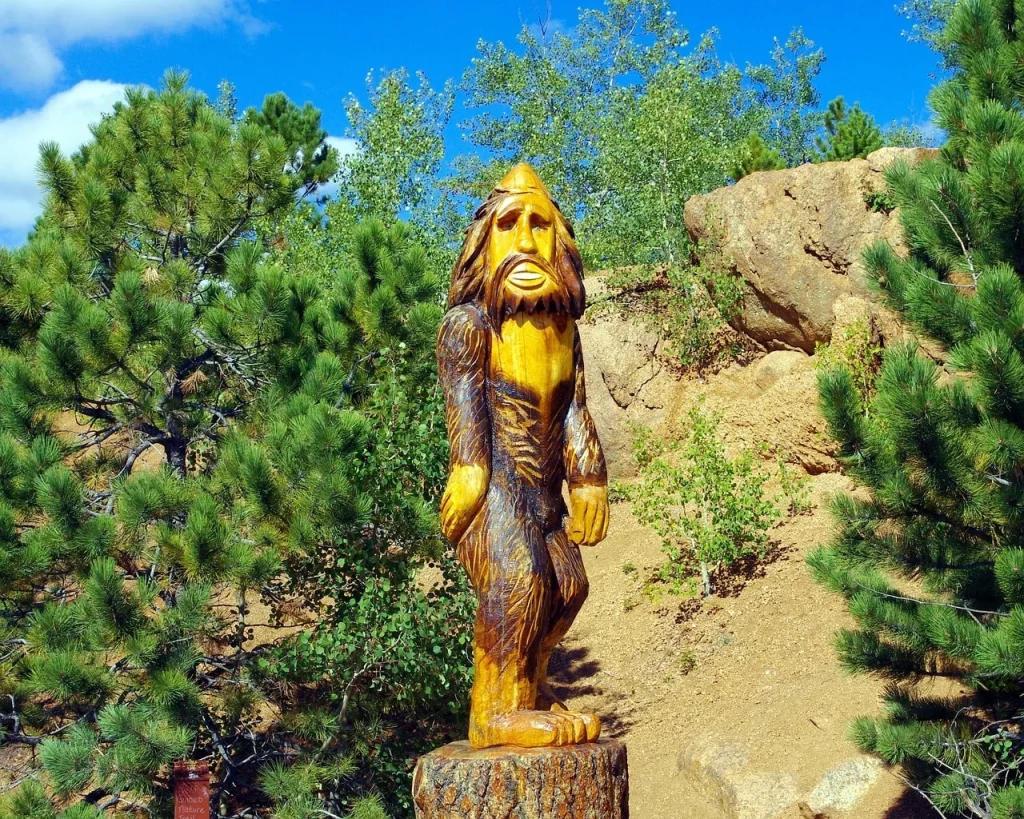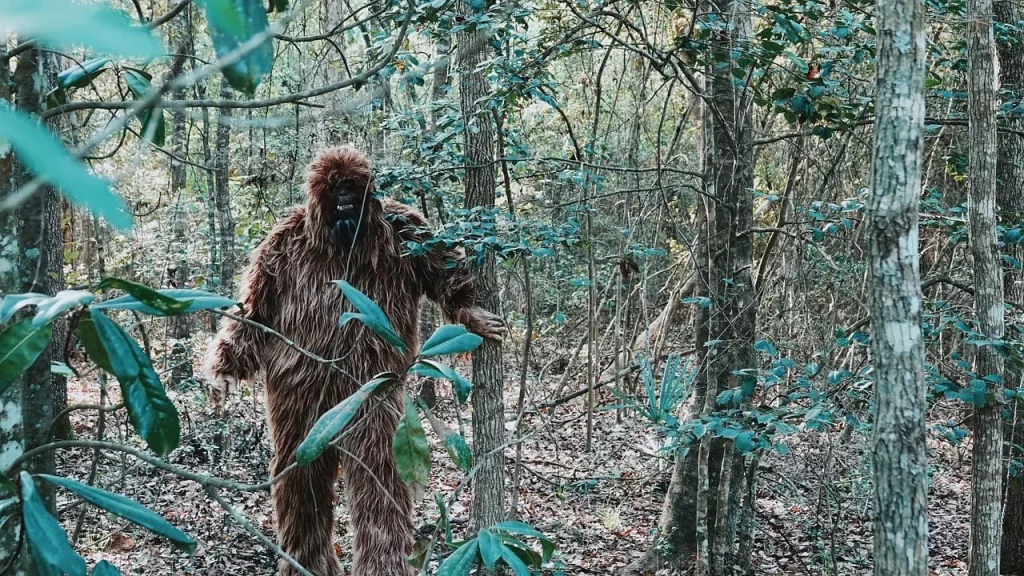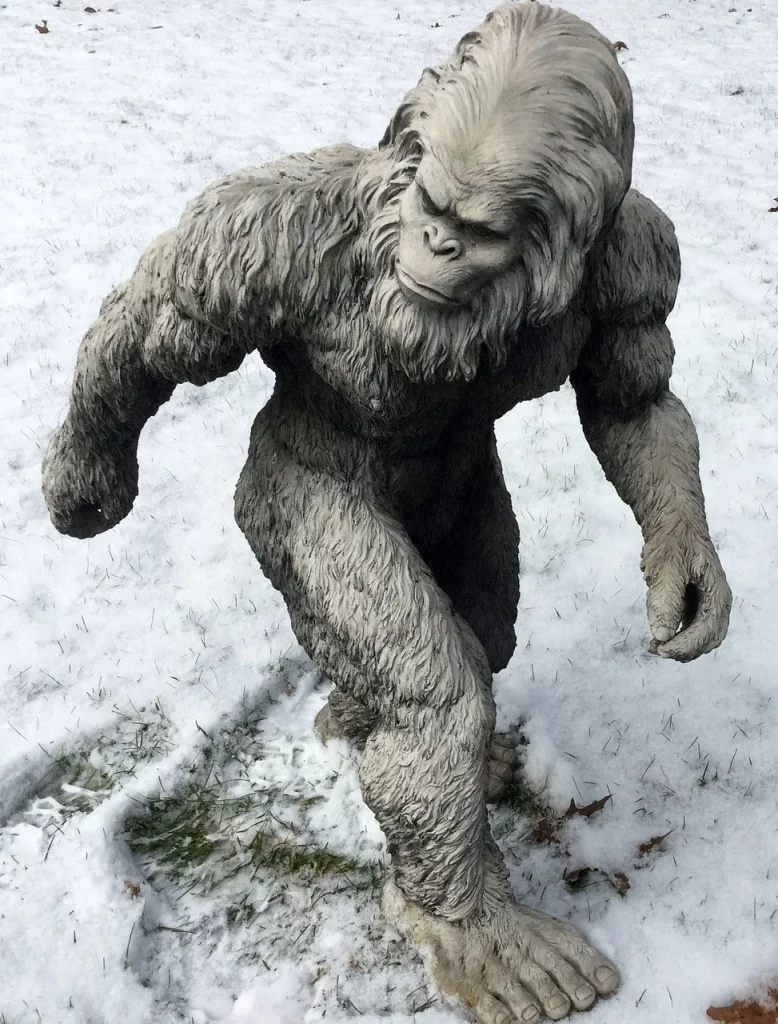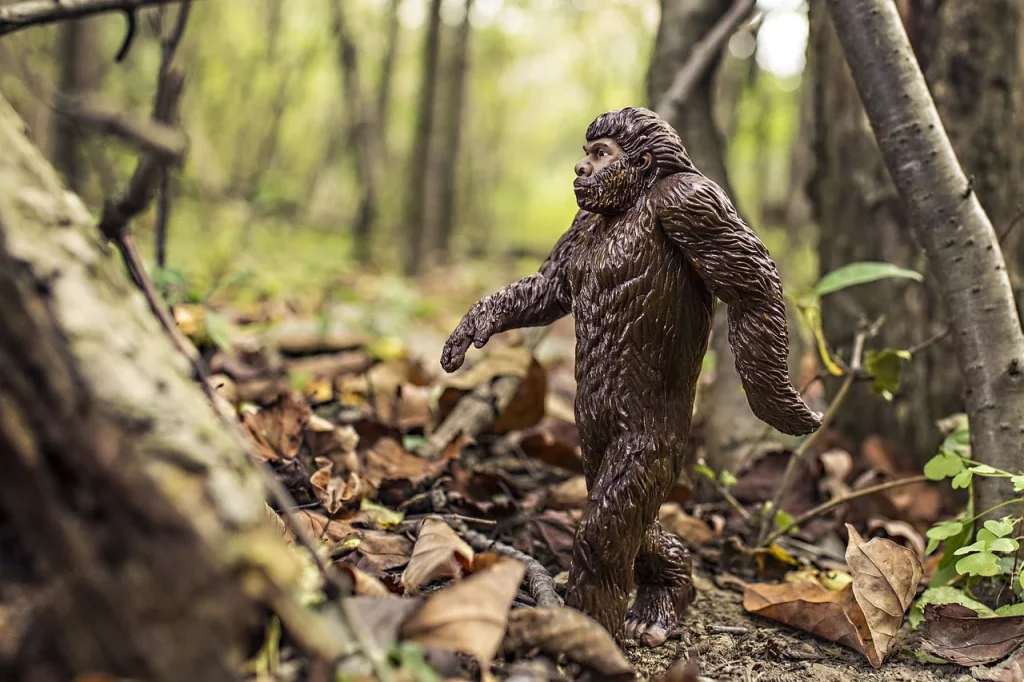Welcome to the world of Bigfoot, a place where the line between myth and reality blurs, and the crunch of a twig underfoot could mean you’re not alone in the woods. Let’s face it: Bigfoot, also known as Sasquatch, has been playing the ultimate game of hide-and-seek with humanity for centuries.
These elusive creatures, reportedly seen in every state except Hawaii (because even Bigfoot can’t resist a vacation), have fascinated us with their mysterious ways. In this article, we’re diving into some fascinating facts about Bigfoot that will make you a believer, or at least a curious skeptic.
Are you ready to step into the unknown and explore the world of this legendary creature? Who knows, you might just spot a bigfoot in your backyard after this!
I’m convinced that Sasquatches exist, and I want you to believe it, too.
Jane Goodall
Bigfoot Facts
As you embark on this journey through the mysterious world of Bigfoot, keep in mind that I created a quiz at the end of this article. Read attentively and arm yourself with knowledge to prove your expertise in this cryptic subject.
- Bigfoot, also known as Sasquatch, is a mythical entity believed to dwell in the forests of North America.
- Characterizations of Bigfoot differ, typically depicted as a sizable, hirsute, bipedal hominid.
- The term “Sasquatch” originates from a Salish Native American word, signifying “wild man” or “hairy man.”
- Bigfoot is predominantly linked to the Pacific Northwest area of the United States and Canada.
- A majority of Bigfoot sightings are documented in Washington State, followed by California, Pennsylvania, and Ohio.
- Bigfoot is frequently described as emitting a potent, disagreeable odor by those who allege to have encountered it.
- The earliest published account of a Bigfoot sighting in the United States appeared in 1818 in the Exeter Watchman.
- Footprints purported to be of Bigfoot are often approximately 24 inches long and 8 inches wide.
- Bigfoot has been incorporated in various indigenous North American cultures in diverse forms for many centuries.
- The renowned Patterson-Gimlin film, captured in 1967 in Northern California, allegedly depicts a Bigfoot strolling along a riverbank.
- Many experts attribute Bigfoot sightings to the misidentification of wildlife, such as bears.
- Bigfoot has emerged as a prominent subject in cryptozoology, the study of entities whose existence is not yet substantiated.
- The veracity of Bigfoot remains unverified owing to the absence of decisive evidence.

- Proponents of Bigfoot often reference hair samples, footprints, and ambiguous videos as indications of the creature’s reality.
- In 2008, two individuals in Georgia claimed possession of a Bigfoot body, which was later exposed as a synthetic suit.
- Several Native American narratives depict Bigfoot as a spiritual entity rather than a corporeal being.
- The FBI once analyzed what was believed to be Bigfoot hair, only to determine it was deer hair.
- Expeditions are frequently organized to uncover evidence supporting Bigfoot’s existence.
- Bigfoot has been a topic of fascination in various films, documentaries, and literary works.
- In the 1970s, Bigfoot gained popularity as a character in advertisements for a beef jerky brand.
- Some researchers hypothesize that Bigfoot could be a surviving group of Gigantopithecus, a large, extinct ape species.
- Technologies such as trail cameras have been utilized in efforts to procure photographic proof of Bigfoot.
- The term “Bigfoot” was first coined in a 1958 article in the Humboldt Times in California.
- Annually, Bigfoot festivals and conferences are held where enthusiasts convene to exchange evidence and anecdotes.
- Several researchers have critiqued the absence of tangible evidence, like bones or carcasses, to corroborate the existence of Bigfoot.
- Bigfoot has been the focus of various scholarly investigations and expeditions, albeit with minimal definitive outcomes.
- Dr. Grover Krantz, an anthropologist, was among the few academics who earnestly pursued the search for Bigfoot.
- Bigfoot sightings have been reported in every American state except Hawaii.

- Numerous organizations and societies are dedicated to the study and discussion of Bigfoot.
- Some reported sightings of Bigfoot have been attributed to fabrications, with individuals creating false tracks or other proofs.
- Bigfoot is often portrayed in popular culture as a timid, solitary creature.
- Various television programs, such as “Finding Bigfoot,” have been dedicated to the quest for this creature.
- Researchers employ diverse methods, including DNA analysis, to examine evidence purported to be from Bigfoot.
- The Bigfoot Field Researchers Organization (BFRO) is among the most prominent groups devoted to the study of Bigfoot.
- Many reports of Bigfoot describe the creature producing loud, ominous sounds or screams.
- In 2012, a team claimed to have sequenced Bigfoot DNA, yet the findings were contentious and widely challenged.
- Bigfoot has become a symbolic representation of the enigma and wilderness of the North American continent.
- Despite thorough searches, no verifiable physical proof of Bigfoot’s existence has been uncovered.

- Some individuals speculate that Bigfoot could be an elusive species that has managed to evade human detection.
- Bigfoot has been featured in advertising and marketing initiatives, often symbolizing elusiveness or intrigue.
- Theories regarding Bigfoot’s origins are varied, ranging from an unidentified species to an extraterrestrial entity.
- Merchandise themed around Bigfoot, including toys, apparel, and literature, enjoys popularity among enthusiasts.
- The cultural influence of Bigfoot extends to music, inspiring songs and bands themed around the creature.
- Some Bigfoot researchers use advanced equipment, like thermal imaging cameras, in their quest for evidence.
- Debates among the Bigfoot community regarding the creature’s habits, behaviors, and potential habitats are ongoing.
- The quest for Bigfoot is often dismissed as pseudoscience by many in the scientific field.
- Despite widespread skepticism, the legend of Bigfoot continues to captivate the global imagination.
- In certain regions, Bigfoot is regarded as a protected species, with legislation prohibiting its hunting.
- Bigfoot has inspired various artistic expressions, including sculptures, paintings, and literary works.
- An annual Bigfoot Discovery Day is celebrated by enthusiasts to commemorate the pursuit of the creature.
Bigfoot Myths

Now that we’ve uncovered the facts, it’s time to address the myths. Join me as we separate the myth from the truth.
- Bigfoot Has Only Been Spotted in North America
Although the most famous Bigfoot sightings are from North America, similar creatures have been reported globally. For instance, the Yeti in the Himalayas and the Yowie in Australia are part of local folklore. These tales suggest a universal human fascination with mysterious, humanoid creatures, rather than a phenomenon exclusive to one continent. - Bigfoot is a Recent Invention
Stories of Bigfoot-like creatures date back centuries in various cultures. Native American legends, for example, speak of large, hairy beings, each with its own unique name and attributes. This historical context indicates that the concept of Bigfoot is deeply rooted in human storytelling and myth-making. - Bigfoot is Always Hostile
Accounts of Bigfoot behavior vary widely, with many reports suggesting a shy and elusive creature. It is more often described as avoiding human contact rather than seeking it out. These descriptions challenge the myth of an inherently aggressive Bigfoot, portraying a more nuanced character. - Bigfoot Leaves Distinctive Footprints
While “Bigfoot” is named for its supposedly large footprints, the authenticity of these prints is widely debated. Many have been proven to be hoaxes or misidentified animal tracks. The evidence is largely circumstantial and not universally accepted as proof of a large, unknown primate. - Bigfoot is a Single Creature
In the lore surrounding Bigfoot, it’s often treated as a singular being. However, for such a creature to sustain a population, there would need to be a breeding population. This suggests the myth might refer to a species, albeit hypothetical, rather than an individual entity, if it were to exist in reality.
No products found.
Bigfoot Quotes

This elusive giant, said to roam the forests of North America, has been a subject of fascination and debate for decades. Below, you will find a list of my favorite quotes about Bigfoot. Let me know yours in the comments so I can add them to the list.
After three days of looking, I have no doubt that they exist.
Peter Byrne
Peter Byrne, a prominent Bigfoot researcher, confidently declared his belief in Bigfoot’s existence after an extensive search, reflecting his dedication to cryptozoological studies.
The evidence for the existence of Bigfoot is not only intriguing, but it’s scientifically compelling.
Jeff Meldrum
Jeff Meldrum, a respected professor of anatomy and anthropology, acknowledged the compelling nature of Bigfoot evidence from a scientific standpoint, highlighting his expertise in primate locomotion and footprint analysis.
I think that Bigfoot research is valid and deserves more scientific scrutiny.
Grover Krantz
Grover Krantz, an anthropologist and early academic advocate for Bigfoot research, advocated for serious scientific consideration of Bigfoot, underscoring his academic approach to cryptozoology.
There’s more evidence that Bigfoot exists than that a meteor killed off the dinosaurs.
Cliff Barackman
Cliff Barackman, a Bigfoot researcher and co-host of the TV series ‘Finding Bigfoot,’ boldly compared the evidence for Bigfoot’s existence with that of a well-accepted scientific theory, showcasing his strong conviction.
I don’t believe in Bigfoot; I know they exist.
Todd Standing
Todd Standing, a documentary filmmaker known for his work on Bigfoot, stated his unequivocal belief in the existence of Bigfoot, reflecting a level of certainty that goes beyond mere belief.
Bigfoot FAQ

I hope you enjoyed all this information so far. I clearly did. This is the last section before the quiz. Read these answers carefully, and don’t disappoint me.
- Who is Bigfoot?
Bigfoot, also known as Sasquatch, is a mythical creature said to inhabit remote forests, mainly in the Pacific Northwest region of North America. Described as a large, hairy, ape-like being, Bigfoot has become a popular figure in folklore and cryptozoology, with many alleged sightings and footprints fueling its legend. - How tall is Bigfoot?
Reports and alleged sightings of Bigfoot suggest that it stands anywhere from 6 to 10 feet tall. This wide range is based on various eyewitness accounts and interpretations of footprints and other supposed evidence. - Is Bigfoot real?
The existence of him remains a subject of debate. Despite numerous claims of sightings and evidence like footprints, there is no conclusive scientific proof of Bigfoot’s existence. Most scientists and wildlife experts consider Bigfoot to be a combination of folklore, misidentification, and hoaxes rather than a living creature. - What evidence exists of Bigfoot’s presence?
Evidence cited by enthusiasts includes footprints, grainy videos and photographs, and eyewitness accounts. However, most of this evidence is heavily scrutinized and often dismissed by scientists. Some footprints and videos have been proven to be hoaxes, while others remain unexplained but not universally accepted as proof of Bigfoot. - What do experts say about the plausibility of Bigfoot’s existence?
Most experts, particularly those in the fields of zoology and anthropology, are skeptical about the existence of Bigfoot. They argue that the lack of clear, empirical evidence such as bones, clear photographs, or DNA samples makes it highly unlikely that a large primate could go undetected in today’s world. They often attribute sightings to misidentifications of known wildlife or hoaxes.
No products found.
Bigfoot Trivia

Welcome to our Bigfoot Quiz! Get ready to track down the truth, because if you miss all the questions, you might just find Bigfoot knocking on your door asking why you didn’t study harder!
Conclusion
To wrap it all up, the Bigfoot phenomenon is a fascinating puzzle that continues to baffle and intrigue enthusiasts and skeptics alike. With the evidence at hand, the question remains: Does Bigfoot roam our forests and wilderness, or is it just a product of folklore and fantasy?
3 Sources Used For This ArticleUnbelievable Facts About Bigfoot – At Once
What Is The Scientific View Of Bigfoot – Is Bigfoot Real


